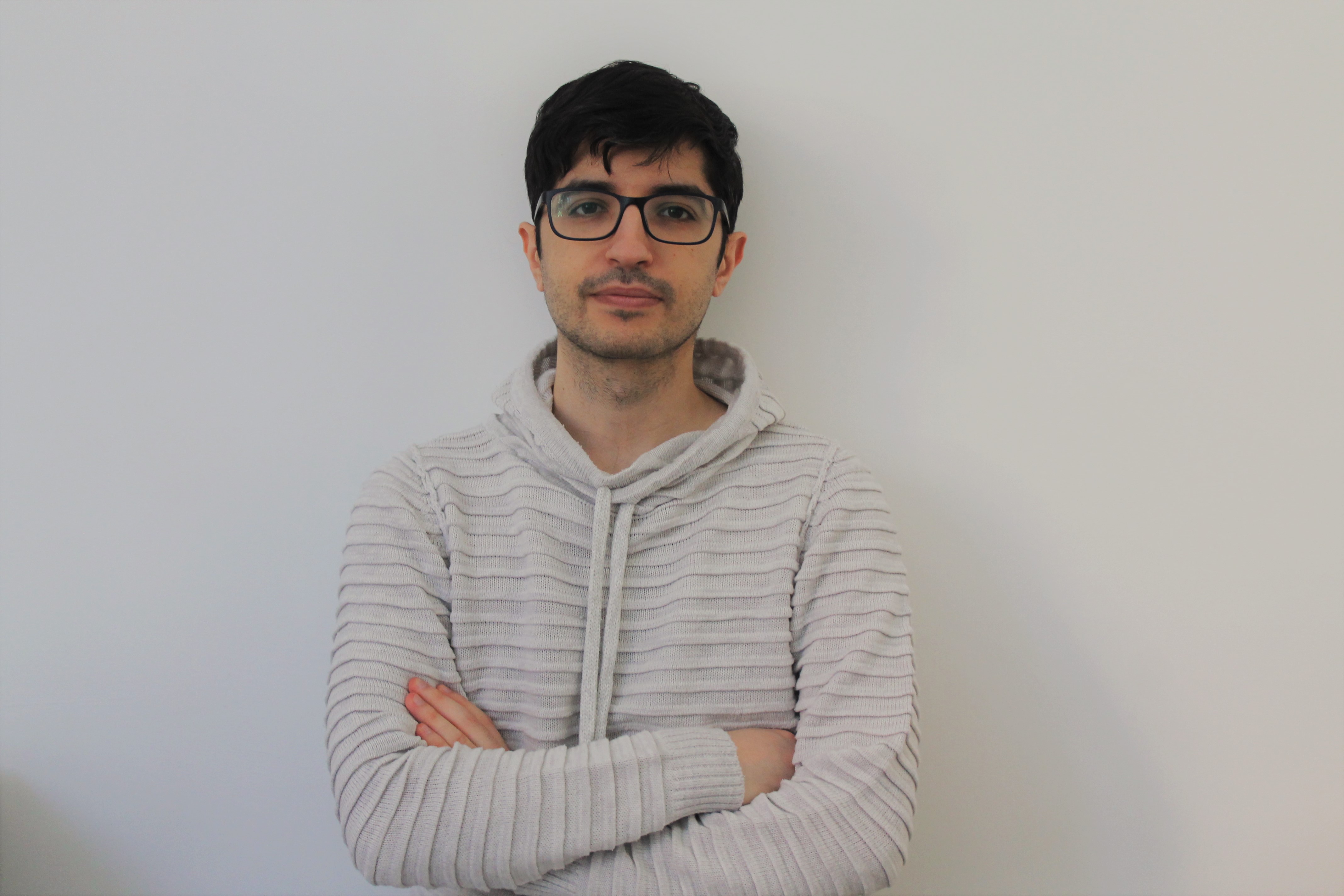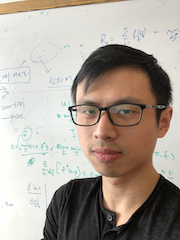About
Recently, artificial intelligence has seen the explosion of deep learning models, which are able to reach super-human performance in several tasks, finding application in many domains. These performance improvements, however, come at a cost: DL models are uninterpretable black boxes, where one feeds an input and obtains an output without understanding the motivations behind that prediction or decision.
To address this problem, two research areas are particularly active: the eXplainable AI (XAI) field and the visual analytics community. The eXplainable XAI field tries to address such problems by proposing algorithmic methods that can explain, at least partially, the behavior of these networks. Their works also try to define the limits of interpretability, the definition of valid metrics, the study of users, and the study of the effectiveness of these solutions. Conversely, visual analytics systems target users helping them to understand and interact with machine learning models providing visualizations and systems that facilitate the exploration, analysis, interaction, and understanding of machine learning models. In the last few years, the usage of methodologies that explain deep learning models has become central in these systems. As a result, the interaction between the XAI and visual analytics communities is becoming more and more important.
The workshop aims at advancing the discourse by collecting novel methods and discussing challenges, issues, and goals around the usage of XAI approaches to debug and improve current deep learning models. To achieve this goal, the workshop aims at bringing researchers and practitioners from both fields, strengthening their collaboration. In particular, we narrow the XAI focus to the specific case in which developers or researchers need to debug their models and diagnose system behaviors. Therefore we start from the assumption that this type of user typically has substantial knowledge about the models themselves but needs to validate, debug, and improve them. The workshop is scheduled for December 14, 2021.
Topics
The topics include but are not limited to:
- Novel XAI methods (post-hoc, ante-hoc, model-agnostic, etc.): note that these methods should be applicable to deep learning models, but their scope also can be different from debugging or diagnosis;
- Interpretable/Explainable deep learning models;
- Applications and protocols that use current XAI methods to improve and/or debug deep learning models;
- XAI evaluation: how can we assess the quality of explanations and their effectiveness for debugging purposes?
- User studies that include developers
- Qualitative analysis of XAI techniques
- Visualization techniques for debugging Deep Learning models;
- Debugging via interpretability: How can explainable artificial intelligence help us in debugging deep learning models?
- XAI methods to identify and address sources and causes of failure (e.g.training data, regularization, objective functions, etc.);
- Visual analytics systems for understanding and debugging deep learning models;
- Visual analytics systems guided by XAI methods - where XAI methods are the core of the system;
- Analysis of limitations of current XAI approaches;
- Position papers on the topic of the workshop.
Schedule
Central European Time (CET)
|
Tue 2:00 p.m. - 2:09 p.m. (CET)
|
Welcome
(Opening)
|
Roberto Capobianco |
|
Tue 2:10 p.m. - 2:13 p.m. (CET)
|
Speaker Introduction
(Introduction)
|
Wen Sun |
|
Tue 2:14 p.m. - 2:52 p.m. (CET)
|
[IT1] Visual Analytics for Explainable Machine Learning
(Invited Talk)
|
Shixia Liu |
|
Tue 2:53 p.m. - 3:03 p.m. (CET)
|
Q/A Session
(Live Q/A)
|
Wen Sun, Shixia Liu |
|
Tue 3:04 p.m. - 3:05 p.m. (CET)
|
Speaker Introduction
(Introduction)
|
Biagio La Rosa |
|
Tue 3:05 p.m. - 3:19 p.m. (CET)
|
[O1] Visualizing the Sim2Real Gap in Robot Ego-Pose Estimation
(Oral)
|
Théo Jaunet, Christian Wolf |
|
Tue 3:20 p.m. - 3:25 p.m. (CET)
|
Q/A Session
(Live Q/A)
|
Biagio La Rosa |
|
Tue 3:25 p.m. - 3:35 p.m. (CET)
|
Break (10min)
(Break)
|
|
|
Tue 3:35 p.m. - 3:37 p.m. (CET)
|
Speaker Introduction
(Introduction)
|
Biagio La Rosa |
|
Tue 3:37 p.m. - 4:21 p.m. (CET)
|
[IT2] Explainability and robustness: Towards trustworthy AI
(Invited Talk)
|
Andreas Holzinger |
|
Tue 4:22 p.m. - 4:32 p.m. (CET)
|
Q/A Session
(Live Q/A)
|
Biagio La Rosa, Andreas Holzinger |
|
Tue 4:33 p.m. - 4:34 p.m. (CET)
|
Speaker Introduction
(Introduction)
|
Leilani H Gilpin |
|
Tue 4:34 p.m. - 4:49 p.m. (CET)
|
[O2] Not too close and not too far: enforcing monotonicity requires penalizing the right points
(Oral)
|
Joao Monteiro, mohamed.o.ahmed, Hossein Hajimirsadeghi, Greg Mori |
|
Tue 4:50 p.m. - 4:55 p.m. (CET)
|
Q/A Session
(Live Q/A)
|
Leilani H Gilpin |
|
Tue 4:55 p.m. - 5:05 p.m. (CET)
|
Break (10min)
(Break)
|
|
|
Tue 5:05 p.m. - 5:07 p.m. (CET)
|
Speaker Introduction
(Introduction)
|
Biagio La Rosa |
|
Tue 5:07 p.m. - 5:20 p.m. (CET)
|
[G] Empowering Human Translators via Interpretable Interactive Neural Machine Translation
(A glimpse of the future Track)
|
Gabriele Sarti |
|
Tue 5:21 p.m. - 5:26 p.m. (CET)
|
Q/A Session
(Live Q/A)
|
Biagio La Rosa, Gabriele Sarti |
|
Tue 5:27 p.m. - 5:28 p.m. (CET)
|
Speaker Introduction
(Introduction)
|
Biagio La Rosa |
|
Tue 5:28 p.m. - 5:41 p.m. (CET)
|
[O3] Reinforcement Explanation Learning
(Oral)
|
agarwalsiddhant10, OWAIS IQBAL, Sree Aditya Buridi, Madda Manjusha, Abir Das |
|
Tue 5:42 p.m. - 5:47 p.m. (CET)
|
Q/A Session
(Live Q/A)
|
Biagio La Rosa |
|
Tue 5:48 p.m. - 5:50 p.m. (CET)
|
Spotlight Introduction
(Introduction)
|
Biagio La Rosa |
|
Tue 5:50 p.m. - 5:53 p.m. (CET)
|
[S1] Interpreting BERT architecture predictions for peptide presentation by MHC class I proteins
(Spotlight)
|
Hans-Christof Gasser |
|
Tue 5:53 p.m. - 5:57 p.m. (CET)
|
[S2] XC: Exploring Quantitative Use Cases for Explanations in 3D Object Detection
(Spotlight)
|
Sunsheng Gu, Vahdat Abdelzad, Krzysztof Czarnecki |
|
Tue 5:57 p.m. - 6:00 p.m. (CET)
|
[S3] Interpretability in Gated Modular Neural Networks
(Spotlight)
|
Yamuna Krishnamurthy, Chris Watkins |
|
Tue 6:00 p.m. - 6:03 p.m. (CET)
|
[S4] A Robust Unsupervised Ensemble of Feature-Based Explanations using Restricted Boltzmann Machines
(Spotlight)
|
Vadim Borisov, Johannes Meier, Johan Van den Heuvel, Hamed Jalali, Gjergji. Kasneci |
|
Tue 6:03 p.m. - 6:06 p.m. (CET)
|
[S5] Debugging the Internals of Convolutional Networks
(Spotlight)
|
Bilal Alsallakh, Narine Kokhlikyan, Vivek Miglani, Shubham Muttepawar, Edward Wang, Sara Zhang, Orion Reblitz-Richardson |
|
Tue 6:06 p.m. - 6:09 p.m. (CET)
|
[S6] Defuse: Training More Robust Models through Creation and Correction of Novel Model Errors
(Spotlight)
|
Dylan Slack, Nathalie Rauschmayr, Krishnaram Kenthapadi |
|
Tue 6:09 p.m. - 6:12 p.m. (CET)
|
[S7] DeDUCE: Generating Counterfactual Explanations At Scale
(Spotlight)
|
Benedikt Höltgen, Lisa Schut, Jan Brauner, Yarin Gal |
|
Tue 6:12 p.m. - 6:22 p.m. (CET)
|
Break (10min)
(Break)
|
|
|
Tue 6:22 p.m. - 6:25 p.m. (CET)
|
Speaker Introduction
(Introduction)
|
Alexander Feldman |
|
Tue 6:26 p.m. - 7:04 p.m. (CET)
|
[IT3] Towards Reliable and Robust Model Explanations
(Invited Talk)
|
Himabindu Lakkaraju |
|
Tue 7:05 p.m. - 7:15 p.m. (CET)
|
Q/A Session
(Live Q/A)
|
Alexander Feldman, Himabindu Lakkaraju |
|
Tue 7:16 p.m. - 7:17 p.m. (CET)
|
Speaker Introduction
(Introduction)
|
Roberto Capobianco |
|
Tue 7:17 p.m. - 7:32 p.m. (CET)
|
[O4] Are All Neurons Created Equal? Interpreting and Controlling BERT through Individual Neurons
(Oral)
|
Omer Antverg, Yonatan Belinkov |
|
Tue 7:33 p.m. - 7:38 p.m. (CET)
|
Q/A Session
(Live Q/A)
|
Roberto Capobianco |
|
Tue 7:38 p.m. (CET) (CET) - 7:50 p.m. (CET) (CET)
|
Break (12min)
(Break)
|
|
|
Tue 7:50 p.m. (CET) (CET) - 7:51 p.m. (CET) (CET)
|
Speaker Introduction
(Introduction)
|
Leilani H Gilpin |
|
Tue 7:51 p.m. (CET) (CET) - 8:23 p.m. (CET) (CET)
|
[IT4] Detecting model reliance on spurious signals is challenging for post hoc explanation approaches
(Invited Talk)
|
Julius Adebayo |
|
Tue 8:24 p.m. (CET) (CET) - 8:34 p.m. (CET) (CET)
|
Q/A Session
(Live Q/A)
|
Leilani H Gilpin, Julius Adebayo |
|
Tue 8:35 p.m. (CET) (CET) - 8:36 p.m. (CET) (CET)
|
Speaker Introduction
(Introduction)
|
Roberto Capobianco |
|
Tue 8:36 p.m. - 9:48 p.m. (CET)
|
[O5] Do Feature Attribution Methods Correctly Attribute Features?
(Oral)
|
Yilun Zhou, Serena Booth, Marco Tulio Ribeiro, Julie A Shah |
|
Tue 8:49 p.m. - 8:54 p.m. (CET)
|
Q/A Session
(Live Q/A)
|
Roberto Capobianco |
|
Tue 8:55 p.m. - 9:10 p.m. (CET)
|
Break (15min)
(Break)
|
|
|
Tue 9:10 p.m. - 9:11 p.m. (CET)
|
Speaker Introduction
(Introduction)
|
Roberto Capobianco |
|
Tue 9:11 p.m. - 9:27 p.m. (CET)
|
[O6] Explaining Information Flow Inside Vision Transformers Using Markov Chain
(Oral)
|
Tingyi Yuan, Xuhong Li, Haoyi Xiong, Dejing Dou |
|
Tue 9:28 p.m. - 9:32 p.m. (CET)
|
Q/A Session
(Live Q/A)
|
Roberto Capobianco |
|
Tue 9:33 p.m. - 9:36 p.m. (CET)
|
Speaker Introduction
(Introduction)
|
Alice Xiang |
|
Tue 9:37 p.m. - 10:21 p.m. (CET)
|
[IT5] Natural language descriptions of deep features
(Invited Talk)
|
Jacob Andreas |
|
Tue 10:22 p.m. - 10:32 p.m. (CET)
|
Q/A Session
|
Alice Xiang, Jacob Andreas |
|
Tue 10:33 p.m. - 10:35 p.m. (CET)
|
Spotlight Introduction
(Introduction)
|
Biagio La Rosa |
|
Tue 10:35 p.m. - 10:39 p.m. (CET)
|
[S8] Fast TreeSHAP: Accelerating SHAP Value Computation for Trees
(Spotlight)
|
Jilei Yang |
|
Tue 10:39 p.m. - 10:42 p.m. (CET)
|
[S9] Simulated User Studies for Explanation Evaluation
(Spotlight)
|
Valerie Chen, Gregory Plumb, Nicholay Topin, Ameet S Talwalkar |
|
Tue 10:42 p.m. - 10:45 p.m. (CET)
|
[S10] Exploring XAI for the Arts: Explaining Latent Space in Generative Music
(Spotlight)
|
Nick Bryan-Kinns, Berker Banar, Corey Ford, Simon Colton |
|
Tue 10:45 p.m. - 10:50 p.m. (CET)
|
[S11] Interpreting Language Models Through Knowledge Graph Extraction
(Spotlight)
|
Vinitra Swamy, Angelika Romanou, Martin Jaggi |
|
Tue 10:50 p.m. - 10:53 p.m. (CET)
|
[S12] Efficient Decompositional Rule Extraction for Deep Neural Networks
(Spotlight)
|
Mateo Espinosa Zarlenga, Mateja Jamnik |
|
Tue 10:53 p.m. - 10:57 p.m. (CET)
|
[S13] Revisiting Sanity Checks for Saliency Maps
(Spotlight)
|
Gal O Yona |
|
Tue 10:57 p.m. - 11:01 p.m. (CET)
|
[S14] Towards Better Visual Explanations for Deep ImageClassifiers
(Spotlight)
|
Agnieszka Grabska-Barwinska, Amal Rannen-Triki, Omar Rivasplata, András György |
|
Tue 11:00 p.m. - 11:06 p.m. (CET)
|
Closing Remarks
(Closing)
|
Biagio La Rosa |
|
Tue 11:06 p.m. - 11:30 p.m. (CET)
|
Poster Session
|
Invited Speakers
Detecting model reliance on spurious signals is challenging for post hoc explanation approaches
Natural language descriptions of deep features
Explainability and robustness: Towards trustworthy AI
Towards Reliable and Robust Model Explanations
Visual Analytics for Explainable Machine Learning
List of Accepted Papers
A Robust Unsupervised Ensemble of Feature-Based Explanations using Restricted Boltzmann Machines
Vadim Borisov, Johannes Meier, Johan Van den Heuvel, Hamed Jalali, and Gjergji. Kasneci
[Paper][Code]
Are All Neurons Created Equal? Interpreting and Controlling BERT through Individual Neurons
Omer Antverg and Yonatan Belinkov
[Paper]
Do Feature Attribution Methods Correctly Attribute Features?
Yilun Zhou, Serena Booth, Marco Tulio Ribeiro, and Julie Shah
[Paper]
Debugging the Internals of Convolutional Networks
Bilal Alsallakh, Narine Kokhlikyan, Vivek Miglani, Shubham Muttepawar, Edward Wang, Sara Zhang, David Adkins, and Orion Reblitz-Richardson
[Paper]
DeDUCE: Generating Counterfactual Explanations At Scale
Benedikt Höltgen, Lisa Schut, Jan M. Brauner, and Yarin Gal
[Paper][Code]
Defuse: Training More Robust Models through Creation and Correction of Novel Model Errors
Dylan Z Slack, Nathalie Rauschmayr, and Krishnaram Kenthapadi
[Paper]
Efficient Decompositional Rule Extraction for Deep Neural Networks
Mateo Espinosa Zarlenga, Zohreh Shams, and Mateja Jamnik
[Paper][Code]
Explaining Information Flow Inside Vision Transformers Using Markov Chain
Yuan Tingyi, Xuhong Li, Haoyi Xiong, Hui Cao, and Dejing Dou
[Paper][Code]
Exploring XAI for the Arts: Explaining Latent Space in Generative Music
Nick Bryan-Kinns, Berker Banar, Corey Ford, Courtney N Reed, Yixiao Zhang, Simon Colton, and Jack Armitage
[Paper][Code]
Fast TreeSHAP: Accelerating SHAP Value Computation for Trees
Jilei Yang
[Paper]
Interpretability in Gated Modular Neural Networks.
Yamuna Krishnamurthy and Chris Watkins
[Paper][Code]
Interpreting BERT architecture predictions for peptide presentation by MHC class I proteins
Hans-Christof Gasser, Georges Bedran, Bo Ren, David Goodlett, Javier Alfaro, and Ajitha Rajan
[Paper][Code]
Interpreting Language Models Through Knowledge Graph Extraction
Vinitra Swamy, Angelika Romanou, and Martin Jaggi
[Paper][Code]
Not too close and not too far: enforcing monotonicity requires penalizing the right points
Joao Monteiro, Mohamed Osama Ahmed, Hossein Hajimirsadeghi, and Greg Mori
[Paper]
Reinforcement Explanation Learning
Siddhant Agarwal, Owais Iqbal, Sree Aditya Buridi, Madda Manjusha, and Abir Das
[Paper] [Code]
Revisiting Sanity Checks for Saliency Maps.
Gal Yona
[Paper]
Simulated User Studies for Explanation Evaluation.
Valerie Chen, Gregory Plumb, Nicholay Topin, and Ameet Talwalkar
[Paper]
Towards Better Visual Explanations for Deep ImageClassifiers.
Agnieszka Grabska-Barwinska, Amal Rannen-Triki, Omar Rivasplata, and András György
[Paper]
Visualizing the Sim2Real Gap in Robot Ego-Pose Estimation
Théo Jaunet, Guillaume Bono, Romain Vuillemot, and Christian Wolf
[Paper][Code]
XC: Exploring Quantitative Use Cases for Explanations in 3D Object Detection
Sunsheng Gu, Vahdat Abdelzad, and Krzysztof Czarnecki
[Paper][Code]
Organization
Organizers
Advisory Board
Peter Stone (Sony AI) and Daniele Nardi (Sapienza University of Rome)
*Outstanding Reviewers**
- Sandareka Wickramanayake from the National University of Singapore
- Wolfgang Stammer from the Machine Learning Lab, TU Darmstadt,
- Seo-Jin Bang from Carnegie Mellon University
- Prof. José Antonio Oramas Mogrovejo from the Internet Data Lab (IDLab) at the University of Antwerp
- Prof. Dr. Ute Schmid, Bettina Finzel and Johannes Rabold from The Cognitive Systems Group, University of Bamberg
Program Committee
- Adam Perer, Carnegie Mellon University
- Ana Lucic, University of Amsterdam
- Amirata Ghorbani, Stanford University
- Arjun Akula, University of California
- Avishek Anand, Leibniz University
- Bilal Alsallakh, Facebook
- Chaofan Chen, University of Maine
- Chirag Agarwal, Harvard University
- Christopher J. Anders, Technical University of Berlin
- Daniele Nardi, Sapienza University of Rome
- Damien Garreau, Universite Cote d’Azur
- Eoin M. Kenny, Insight Centre for Data Analytics
- Eunji Kim, Seoul National University
- Francesca Rossi, IBM
- Giuseppe Santucci, Sapienza University of Rome
- Gregory Plumb, Carnegie Mellon University
- Hanjie Chen, University of Virginia
- Jaesik Choi, KAIST
- James Wexler, Google
- Jesse Vig, Salesforce
- Jie Ren, Shanghai Jiao Tong University
- José Oramas, University of Antwerp
- Lev Utkin, Peter the Great St.Petersburg Polytechnic University
- Marco Angelini, Sapienza University of Rome
- Marco Valentino, University of Manchester
- Mark Keane, University College Dublin
- Pepa Atanasova, University of Copenhagen
- Przemyslaw Biecek, Warsaw University of Technology
- Riccardo Guidotti, University of Pisa
- Rosina Weber, Drexel University
- Sameer Singh, University of California
- Sandareka Wickramanayake, National University of Singapore
- Scott Cheng-Hsin Yang, Rutgers University
- Shivansh Patel, University of Illinois
- Seojin Bang, Carnegie Mellon University
- Sijia Liu, Michigan State University
- Suryabhan Singh Hada, University of California
- Tong Wang, University of Iowa
- Tongshuang Wu, University of Washington
- Umang Bhatt, University of Cambridge
- Ute Schmid, University of Bamberg
- Vitali Petsiuk, Boston University
- Wenbo Guo, Pennsylvania State University
- Wojciech Samek, Fraunhofer HHI
- Wolfgang Stammer, Technical University Darmstadt
- Woo-Jeoung Nam, Korea University
- Yunfeng Zhang, IBM
FAQ
-
I am a registered account for NeurIPS 2021 Conference. Can I see the videos of presentations before and after the workshop date?
A: Yes. You will find the links to the videos in the NeurIPS virtual site associated with our workshop here. Videos will be made available as soon as possible. They should be visible at least one week before the date of the workshop. -
I am not a registered account for NeurIPS 2021 Conference. Where can I find the links to the papers, code, and videos of presentations?
A: Links to papers and code will be released in the last week of November, approximately two weeks before the workshop date. You will find them in the accepted paper list section. Videos will be eventually made public after the workshop, only when and whether both authors and NeurIPS agree with this procedure. - Q: How can I ask questions to authors?
A: You can ask questions live using the Rocket chat and our volunteers will try to extract them during the live Q/A or you can join our Slack Channel and you will find a channel for each presentation. In this way, you can ask your questions both before and after the workshop. - Q: Is the paper archived in any proceedings?
A: No, there will be no official proceedings. We will only host the papers on our website. - Q: Can I attend the workshop without being registered for NeurIPS 2021 conference?
A: The workshop is hosted by NeurIPS. Therefore, you have to be registered for the conference of NeurIPS 2021 in order to attend the live sessions and the poster session of our workshop. - Q: Is there any additional cost associated with the acceptance of my paper?
A: There are no additional costs associated with our workshop. - Q: I didn’t see the field “Journal Publication” in the openreview site for our paper. Does it mean that our paper didn’t get the invitation:sweat_smile:, or they are just hidden from authors by openreview?
A: There are no additional costs associated with our workshop.
Call for Papers
The call for papers includes three different tracks: regular, mentorship, and a glimpse of the future track. The first one is the traditional track for presenting novel contributions. The second one is directed to young researchers and aims to pair a mentor and a mentee with the goal of polishing early-submissions. The last one is intended for first-year PhD students and MSc students working on the topic, giving them the possibility to introduce themselves and their research proposal to the research community.
Tracks
Regular track:
Submissions to this track have to be novel contributions covering any topic listed above. We don’t accept work that has been already published, that is concurrently submitted to other venues before the submission deadline, or that is presented at the main NeurIPS conference, including as part of an invited talk. We solicit submission of full papers, position papers, and papers describing open problems on one of the topics listed above. Papers must be submitted through the . Papers submitted to the workshop can be submitted to future conferences (e.g. ICML, ICLR) if the acceptance notification comes after the workshop date (December, 14).
We only allow dual submissions of papers submitted to the main NeurIPS 2021 conference with the following constraints: papers must be withdrawn from this workshop before October 1st if they will be accepted at the main conference; papers must include the declaration of dual submission BEFORE the introduction section; authors must append the reviews received from NeurIPS conference (printed from the OpenReview system) to the main corpus and a brief letter summarizing the improvements made after the review process.
We encourage the authors to link a anonymized repository containing the code to replicate the results inside the corpus of the paper. While this is not a mandatory requirement, it will be positively taken in account during the reviewing process and the selection of the contributed talks. You can use Anonymous Github or you can upload your repository on a service that allows anonymity (e.g. GDrive allows anonymous links).
Submissions must follow the NeurIPS anonymized paper format (see NeurIPS style files), and they are limited to a maximum of 9 pages, excluding references. Shorter papers are welcome. They will undergo double-blind peer review. Authors may append to the paper supplementary material, such as appendices, proofs, and derivations; Like submissions, supplementary material must be anonymized. Looking at supplementary material is at the discretion of the reviewers.
At the end of your paper submission, please indicate whether you would like an extended version of the submission to be considered for publication in a journal special issue. According to the feedback from authors, we will further decide whether to publish selected high-quality papers in proceedings or a journal special issue. Reviewers will nominate papers among them with exemplary scientific rigor for publication. We will ask authors again after the acceptance of the paper whether you would like to proceed to a journal special issue. Note that in this case there can be restrictions regarding dual submissions with future conference, depending on the policy of the chosen journal.
Accepted works will be presented as contributed talks or as posters in a poster session or listed on the workshop site as accepted contributions, depending on schedule constraints. It is mandatory that at least one of the authors will attend the workshop and present its work during the contributed talks and the poster session. We are planning to include an additional virtual channel, like Slack, where each accepted paper will have a dedicated section for attendance and authors to discuss. We strongly encourage authors to be available on their section before, during, and shortly after the workshop.
Important Dates for Regular Track:
Submission system opens: 11:59 PM CET, Aug 15, 2021
Submission deadline: 11:59 PM CET, Sep 20, 2021 (Extended deadline!)
Notification date: 11:59 PM CET, Oct 17, 2021
SlidesLive upload for speaker videos: 11:59 PM CET, ~~Oct 25 Oct 28, 2021~~
NEW: Available the LaTeX template style for the camera-ready version HERE. Simply download the file and replace the “neurips_2021.sty” file in your folder. Use the option “final” when importing the neurIPS package using the following command:
\usepackage[final]{neurips_2021}
in your LaTeX .tex file.
Camera-ready deadline : 11:59 PM CET, Nov 5, 2021
Poster deadline : 11:59 PM CET, Dec 1, 2021
Workshop date: Dec 14, 2021
Note that for papers that include a link to the code, the deadline for the camera-ready version is extended to 11:59 PM CET, Nov 15, 2021
Mentorship track:
The mentorship track pairs authors with experienced researchers who have committed to providing meaningful feedback to help polish papers for general submission. This program helps authors to get support and fast feedback from the research community, by facilitating a private dialogue between the mentee and mentor. The papers of this track have to be non-anonymous, template-free. Note that the goal of this track is to receive fast feedback about the structure of the paper and to polish it. It is not intended for deep review. None of the papers submitted to this track will be presented or included in the workshop schedule.
Important Dates for Mentorship track:
Submission deadline: 11:59 PM CET, Sep 30, 2021 LINK
A glimpse of the future track:
This special track aims at discovering and highlighting the most promising students in the field. The students will have the possibility to present their research plan to the community, describing the problems that they plan to address and possible research directions. Submissions for this track must include a research plan (max. 2 pages) and a cover letter from the current or future supervisor. The plan should briefly highlight the problem that the researcher will try to attack, the current methodologies and the expected outcome of its research agenda. This track is intended for first-year PhD students or prospective PhD students. The accepted students will present their plans during the workshop in a dedicated talk. We plan to accept at least 2 students as oral presentations.
Important Dates for A glimpse of the future track:
Submission deadline: 11:59 PM CET, Sep 20, 2021 LINK
Notification Date: 11:59 PM CET, Oct 10, 2021
SlidesLive upload for speaker videos: 11:59 PM CET, Oct 28, 2021
Contacts
If you have any questions feel free to join our slack channel or contact us at any of the following email addresses:
- larosa AT diag.uniroma1.it
- capobianco AT diag.uniroma1.it
- afeldman AT parc.com
- lgilpin AT ucsc.edu










